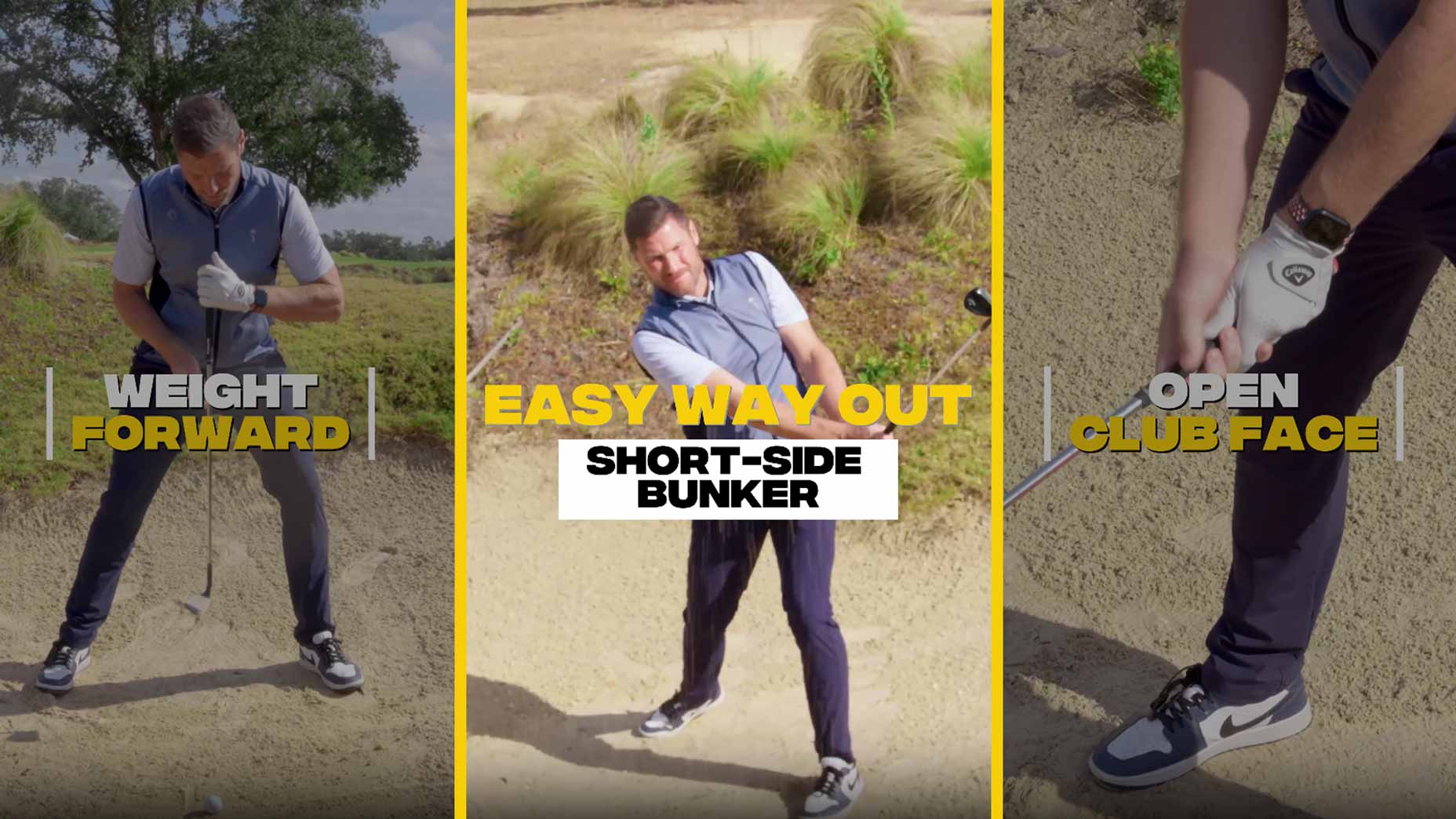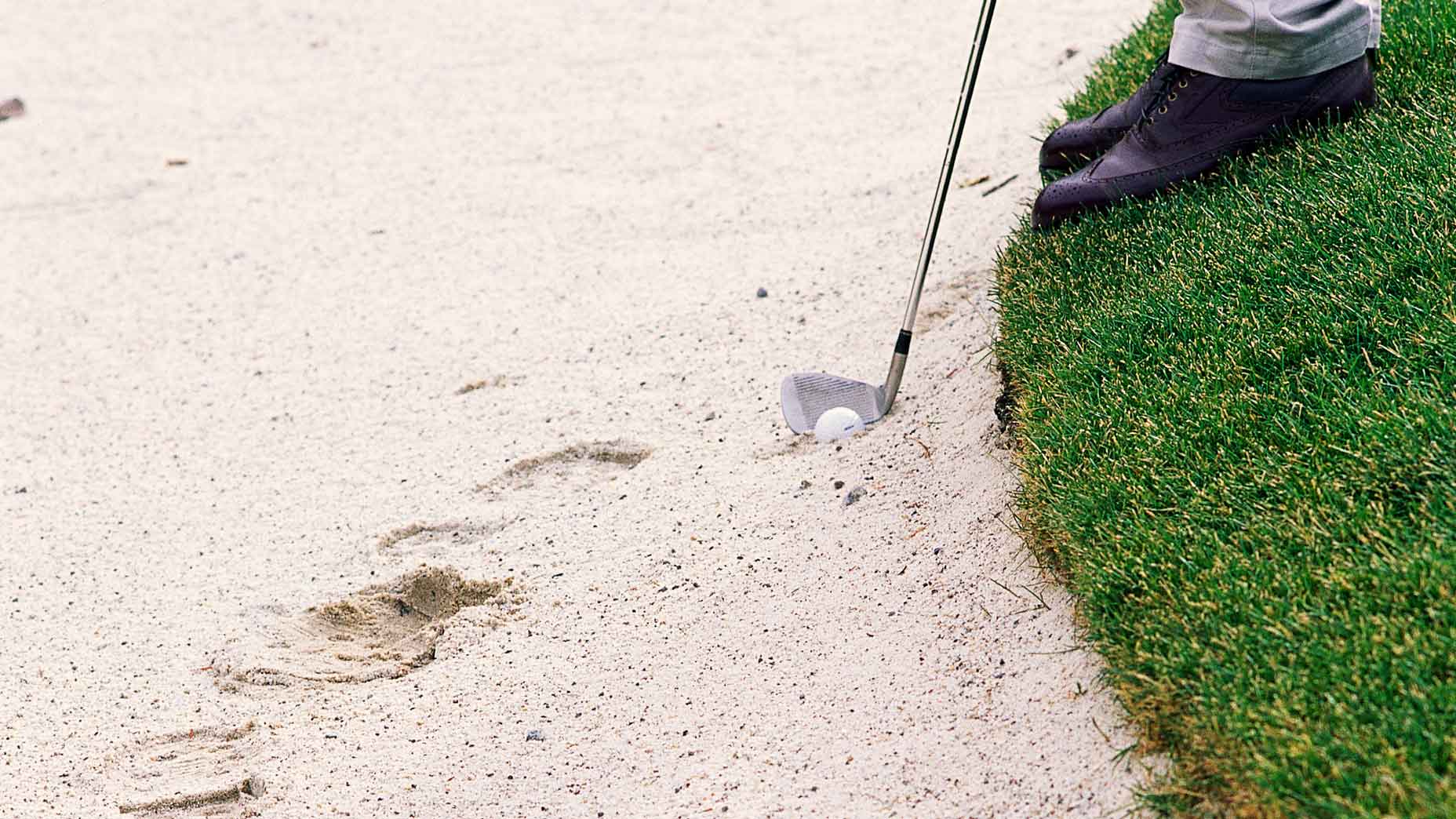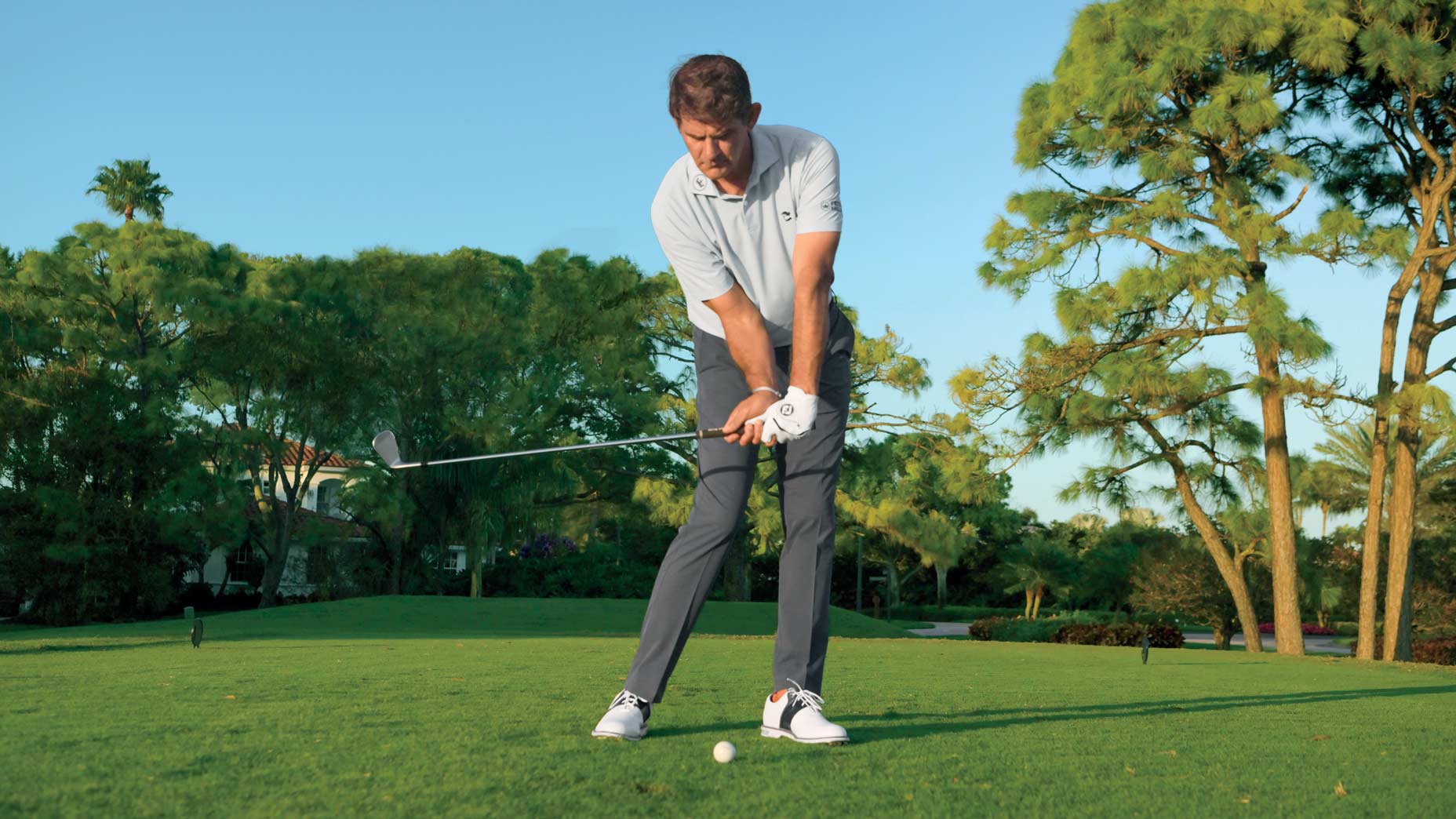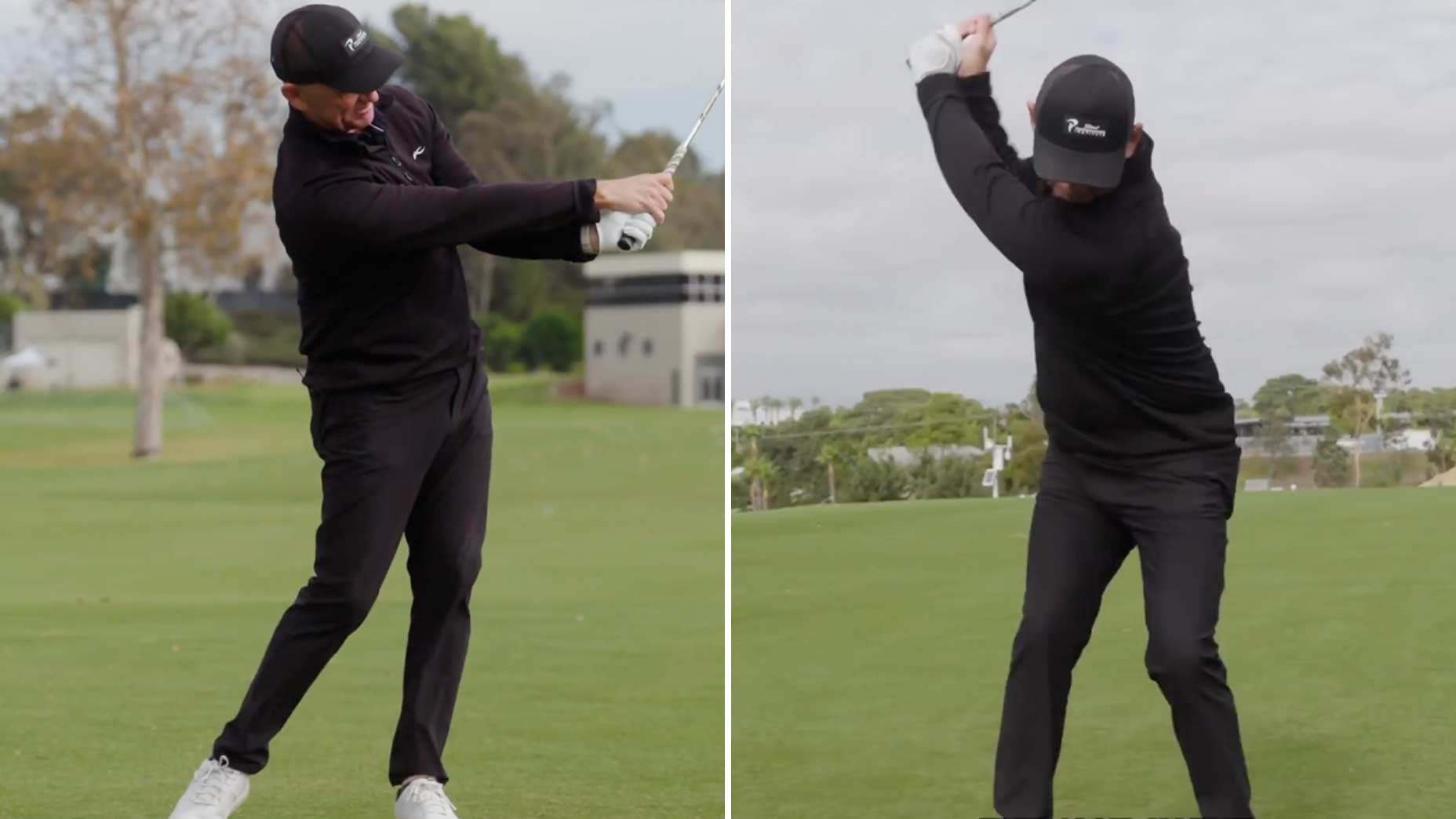Short-sided bunker shots might seem intimidating—especially on firm, fast Bermuda greens like those at Cabot Citrus Farms—but they’re surprisingly easy to execute when you know the correct setup and swing keys.
Lucky for you, one of the most trusted short game coaches in the game, GOLF Teacher to Watch David Armitage, shared his easy-to-follow steps for navigating these tricky sand shots.
Follow his six keys for short-sided bunker shots, and start hitting these with more confidence and precision.
1. Widen your stance
Adding width to your stance not only helps you get your base lower to the ground, but it also helps you get the ball up quicker, which is crucial with short-sided sand shots.
2. Weight forward
When hitting short-sided bunker shots, you don’t want a lot of lateral or back-and-forth movement in your swing. Getting your weight forward adds stability to your base and creates a fixed point to rotate around. To get your weight properly forward, use Armitage’s advice and shift your sternum so your midline is over your lead thigh.
3. Open your clubface
Setting the face open in the sand allows you to add loft, launch the ball higher and generate speed, which helps you create spin.
However, how much you open the clubface depends entirely on the shot at hand. Ask yourself, how high is the lip of the bunker? Where is the hole location? Even knowing if your shot will land downgrain or into the grain can play a factor in how much you open the face. Use your best judgement when dialing in your clubface.
4. Set your hands
“Once I’ve [opened the clubface], that’s when I grip it,” Armitage says. “Don’t make the bad mistake, which is opening the face with your hands already on the club.”
As you place your hands on the grip, keep your grip pressure light. This will reduce tension and help you feel the weight of the club as you swing.
5. Find your ideal entry point and focus on it
Knowing how much sand to take from a short-sided lie in the bunker can be challenging. Take too much and you lose spin, and even risk leaving it in the bunker. But, take too little and your ball goes flying over the green.
As Armitage demonstrates, for short-sided lies, you want your club to enter the sand an inch or two behind the ball. Then, focus on that spot as you make your swing.
6. Keep your speed, abbreviate the finish
Because these shots are so close to the hole, it can feel uncomfortable to keep your speed through the finish out of fear of hitting the shot way over the green. But maintaining your speed is actually essential to the short-sided bunker shot since sand-first contact naturally slows the club down.
Instead of slowing down your swing, try shortening your follow-through. Armitage explains that an abbreviated finish is the best way to take distance off your shot. Plus, the shorter follow-through will also increase your spin and, with enough practice, you’ll be able to stop these tricky shots on a dime.










